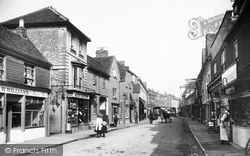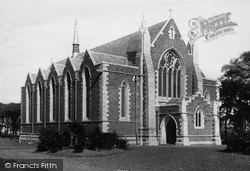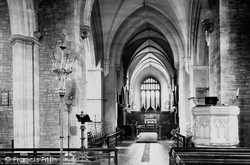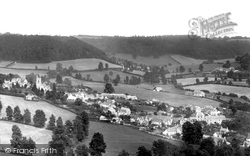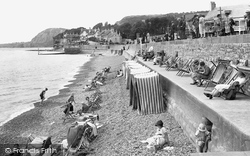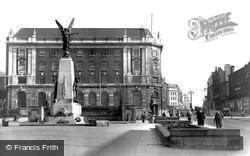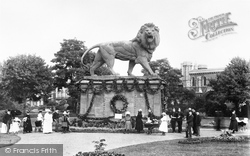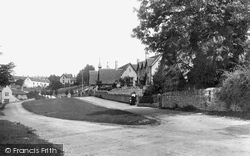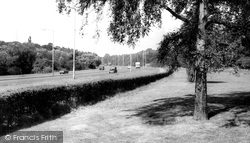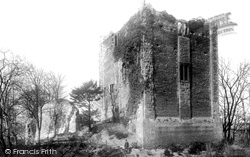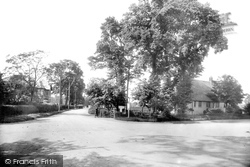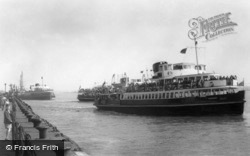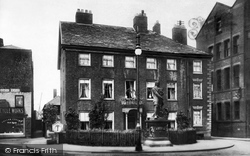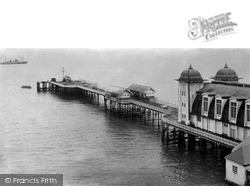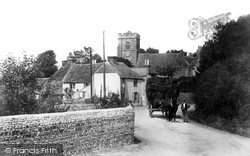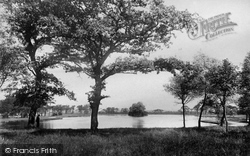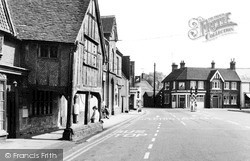Captions
62 captions found. Showing results 21 to 40.
The action-packed scene that is a town street in Edwardian days, with plenty of people going about their business; the only traffic is horse-drawn vehicles.
It was destroyed by fire in 1927, and then the rebuilt and enlarged church was again partially destroyed in 1941 by enemy action.
The plain east window was to be replaced in 1922 by the colourful stained glass of a memorial window to Brigadier Barker, who was killed in action in the First World War.
Standing some 800ft up, rising in green terraces above the village, it affords panoramic views with the erosion caused by rivers and frost action during the Ice Ages evident in the isolation of the
Currently, there are huge breakwaters built of boulders, which have been constructed in an effort to attenuate the scouring action of the water.
During the First World War, Leeds contributed over 90,000 men to the forces, of whom 9,640 were killed in action.
Corporal Cyril Channon died as a Japanese POW, Gunner Alec Collins was lost at sea with Captain John Duncan, and Lieutenant Rhys Thomas was killed in action.
During the First World War, Leeds contributed over 90,000 men to the forces, of whom 9,640 were killed in action.
gigantic lion snarling at the onlooker, was erected in 1884 to commemorate the sixty-sixth Berkshire Regiment's heroism and losses in the Second Afghan War of 1879 to 1880, particularly their rearguard action
Much of the action was set here and at nearby Amberley Court.
days as traffic now reaches saturation point, potholes get deeper and deeper, and road repairs are always carried out at the most inconvenient spot on the road, invariably with scant evidence of work in action
The only action the castle ever saw was in 1216, when it was occupied by the French at the invitation of the Barons rebelling against King John.
To the right the diminutive All Saints Church stands in Squirrel's Heath Lane; it was destroyed by enemy action in 1941.
At one time there were ferries to New Brighton, Egremont, Seacombe, Birkenhead, Rock Ferry and Eastham, and before the Mersey Tunnel opened, vehicle ferries also ran to Seacombe and Birkenhead.
Much of Lancashire was affected by the Civil Wars, and Warrington, an important crossing on the Mersey and chosen by the Royalist, Lord Derby for his headquarters, saw considerable action.
Just two years after the new pavilion's opening, a disaster was averted when bravery and decisive action prevented a blaze reaching it.
The plain east window was to be replaced in 1922 by the colourful stained glass of a memorial window to Brigadier Barker, who was killed in action in the First World War.
A four-wheeled cart is pulled by two horses in tandem and appears to be loaded with brushwood faggots; all of the action is halted whilst waiting patiently for the photographer.There is a fine flint
There was an initial problem, in that the law in Ireland dealing with such things did not allow the necessary action, so this had to be attended to.
Before local government was established, Shefford was fortunate in the action of a 16th-century resident called Robert Lucas, who left his property for the benefit of the citizens of Shefford.




